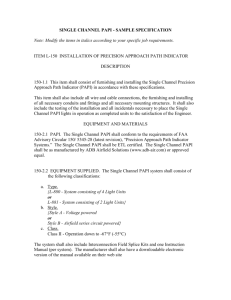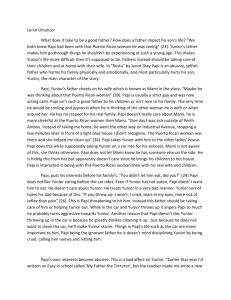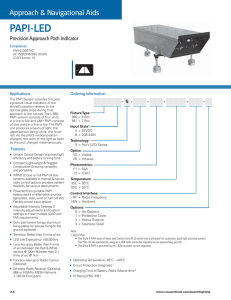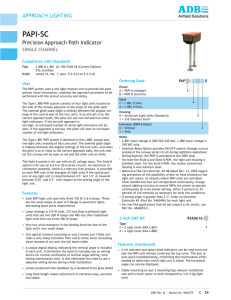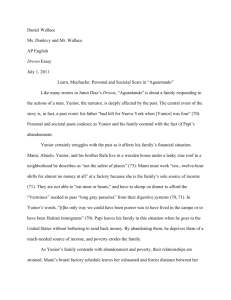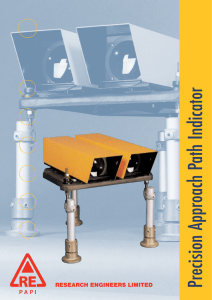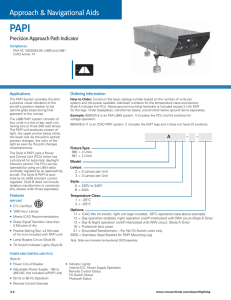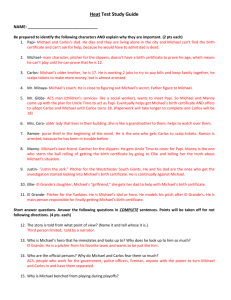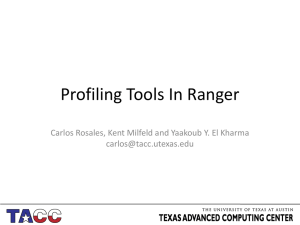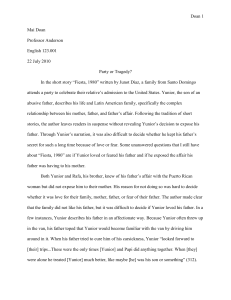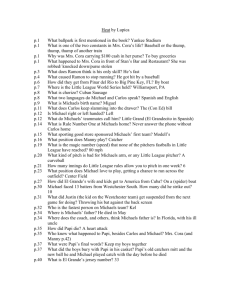Sample Specification
advertisement
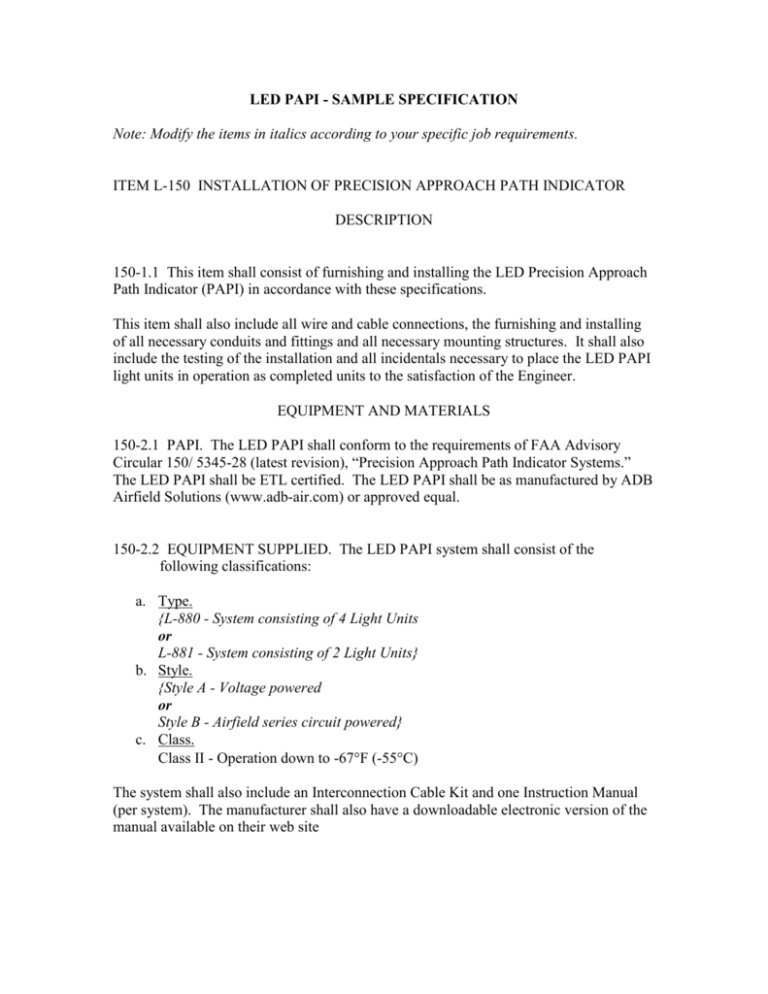
LED PAPI - SAMPLE SPECIFICATION
Note: Modify the items in italics according to your specific job requirements.
ITEM L-150 INSTALLATION OF PRECISION APPROACH PATH INDICATOR
DESCRIPTION
150-1.1 This item shall consist of furnishing and installing the LED Precision Approach
Path Indicator (PAPI) in accordance with these specifications.
This item shall also include all wire and cable connections, the furnishing and installing
of all necessary conduits and fittings and all necessary mounting structures. It shall also
include the testing of the installation and all incidentals necessary to place the LED PAPI
light units in operation as completed units to the satisfaction of the Engineer.
EQUIPMENT AND MATERIALS
150-2.1 PAPI. The LED PAPI shall conform to the requirements of FAA Advisory
Circular 150/ 5345-28 (latest revision), “Precision Approach Path Indicator Systems.”
The LED PAPI shall be ETL certified. The LED PAPI shall be as manufactured by ADB
Airfield Solutions (www.adb-air.com) or approved equal.
150-2.2 EQUIPMENT SUPPLIED. The LED PAPI system shall consist of the
following classifications:
a. Type.
{L-880 - System consisting of 4 Light Units
or
L-881 - System consisting of 2 Light Units}
b. Style.
{Style A - Voltage powered
or
Style B - Airfield series circuit powered}
c. Class.
Class II - Operation down to -67F (-55C)
The system shall also include an Interconnection Cable Kit and one Instruction Manual
(per system). The manufacturer shall also have a downloadable electronic version of the
manual available on their web site
150-2.3 LED PAPI LIGHT UNIT
To insure reduced energy consumption and reduced maintenance requirements, each
PAPI Light Unit shall use a Light Emitting Diode (LED) assembly. To maximize optical
efficiency, the optical system shall consist of a sealed optical chamber. The LED
assembly and front glass shall be easily replaceable without requiring Light Unit recalibration.
The optical chamber shall be protected from sandblasting by a separate, hardened front
glass which is digitally controlled and is designed to ensure that the outer glass is clear of
frost/dew within 3 minutes over a temperature range of -21 °C to +55 °C (-6 °F to -40
°F), 4 minutes over a temperature range of -39 °C to -22 °C (-38 °F to -8 °F), and 5
minutes over a temperature range of -55 °C to -40 °C (-31 °F to -40 °F).
The average intensity in red light will be at least 15,000 Cd for a horizontal beam spread
of -6° to +6° and a vertical angle of 3.5° below transition. The transition sector will not
exceed 3 minutes of arc over the full beam width.
Each Light Unit shall include a control board with associated tilt sensor electronics. The
Light Unit shall have a visual display on the exterior that shows the actual Light Unit
angle. The visual display shall also have the capability to display the horizontal (zero)
setting of the Light Unit. Tilt sensors containing mercury shall not be used.
Each Light Unit shall be constructed as follows:
The Light Unit shall be made from folded aluminum sheet fully protected against
corrosion. It shall be fully weatherproof. For ease of alignment, the PAPI Light Unit
shall be mounted using only three mounting legs. Precision elevation adjustment shall be
possible in less than 10 minutes per unit, making use of the visual display incorporated
into each Light Unit.
{150-2.4 STYLE A SYSTEM REQUIREMENTS. The Light Units shall not require a
separate Master Control Cabinet. Input power to the Primary light unit shall be 215-265
VAC, 50/60Hz {108-132 VAC, 50/60Hz}. For any system configuration, the input power
required by the PAPI shall be 550 VA maximum. No external Master enclosure shall be
required.
The intensity of the PAPI system shall be automatically selected (to high intensity during
the day and low intensity at night) using a photocell connected to the Primary light unit.
{Powered from a continuous 50/60 Hz AC voltage source. Provides On/Off control
through current sensing of the runway series circuit during nighttime operations. During
daytime, light units are activated at the 100% step via control from the photocell (current
sensing input is not used). Nighttime intensity is automatically set to 5% or 20% (field
selectable).}
{Powered from a continuous 50/60 Hz AC voltage source. Provides On/Off control
through current sensing of the runway series circuit. Turns on the light units anytime
(Day or Night) when current greater than 2.8 A is present in the associated series circuit.
When On, light units are activated at the 100% step via control from the photocell during
daytime. Nighttime intensity is automatically set to 5% or 20% (field selectable).
or
{150-2.4 STYLE B SYSTEM REQUIREMENTS. The Light Units shall be powered via
the [3-step, 6,6A] or [5-step, 6.6A] or [5-step, 20A] airfield series circuit. Each LED
PAPI Light Unit shall require only one [6.6A/6.6A] or [20A, 6.6A] 200W (maximum)
isolation transformer.}
CONSTRUCTION METHODS
150-3.1 PLACING THE PAPI LIGHTS. The contractor shall furnish and install the
LED PAPI system as specified in the proposal and shown in the plans. The LED PAPI
shall be mounted {on a concrete base} at the location shown on the plans. The LED
PAPI shall be vertically aligned according to the requirements in the plans using the
aiming procedures detailed by the manufacturer. The tilt sensor shall be set on all Single
Channel PAPI Light Units according to the manufacturer’s instructions.
150-3.2 TESTS. The system shall be fully tested by continuous operation for not less
than 24 hours as a completed system prior to acceptance. The test shall include the
functioning of each intensity control in both Remote and Local not less than 10 times at
the beginning and end of the 24-hour test.
METHOD OF MEASUREMENT
150-4.1 MEASUREMENT. The quantity of lights to be paid for under this item shall be
for one LED PAPI system, one Interconnection Cable Kit and one Instruction Manual
installed and accepted as completed units, in place, ready for operation.
BASIS FOR PAYMENT
150-5.1 PAYMENT. Payment will be made at the contract unit price for the completed
LED PAPI system installed, in place by the Contractor, and accepted by the Engineer.
This price shall be full compensation for furnishing all materials and for all preparation,
assembly, and installation of these materials, and for all labor, equipment, tools, and
incidentals necessary to complete this item.
Payment will be made under:
Item L-150-5.1
LED PAPI system, in Place—per each
END OF ITEM L-150
